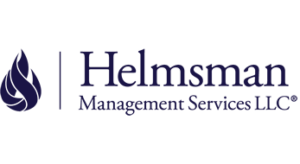
For more than a year, businesses in virtually every sector have scrambled to keep up with the uncertain and rapidly evolving economic landscape under the pandemic. Today, due to vaccine rollouts and the declining number of COVID-19 cases being reported, some restrictions are being lifted. As a result, many organizations are hoping for a return to some degree of normalcy. However, this gradual transition doesn’t mean that businesses can stop worrying about risk mitigation. In fact, the post-COVID world poses a whole new set of risks that business owners will need to address in the coming months ahead.
Here, we take a deep dive into three strategies companies can adopt to mitigate risk in 2021 and beyond, from reducing technology exposures to re-evaluating risk portfolios for the post-COVID economy.
3 strategies to reduce post-pandemic risks
1. Maintain COVID-19 safety protocols
The U.S. recently reached a milestone for COVID-19 vaccinations-Opens in new window with 50% of the population having received at least one shot. And while it’s tempting to fully relax safety standards, we aren’t out of the woods yet. In fact, scientists still aren’t clear-Opens in new window how the novel coronavirus will continue to impact daily life in the months and years to come.
Because of this, it’s important for businesses (large or small), to continue to maintain cleaning protocols and other risk-mitigation strategies implemented during the pandemic. For example, some companies are choosing to retain a digital-first model to help keep employees and customers safe. Other policies, like encouraging employees to stay home when they feel sick and continuing to provide personal protective equipment can also help reduce risk. Plus, these protocols can have other benefits. The Centers for Disease Control and Prevention reported that during the pandemic, the U.S. experienced historically low levels of flu transmission-Opens in new window — due in large part to masks, social distancing, and use of disinfectants. Maintaining a clean workspace means fewer sick days and a healthier overall workforce.
2. Assess potential technology exposures
During the transition to a mostly digital-first workforce in March of 2020, many companies made a quick pivot to new technologies that would support business continuity. Because of the frenzied nature of this transition, however, some companies found themselves at increased risk for technology exposures. McKinsey reports-Opens in new window that many chief security officers have found themselves straining their virtual private networks and patching legacy systems to protect against increasing cybersecurity attacks. Since the pandemic began, targeted email attacks (often called spear-phishing) are at seven times their usual levels—and that’s just one example of ballooning security threats under COVID-19.
Companies that implemented band-aid solutions back in March 2020 are urged to revisit their solutions and consider secure, long-term technologies to support their hybrid workforce. Regardless of your approach, every business can benefit from assessing technology risks, looking for security gaps, and ensuring that due diligence has been taken to protect the company from costly security breaches.
3. Re-evaluate risk-management strategies
No matter your industry, chances are that COVID-19 has changed your risk portfolio. Perhaps your company incurred unexpected debt during the pandemic. Maybe the market for your product shifted––for better or worse—or supply-chain changes impacted your bottom line. According to Deloitte-Opens Pdf document in new window, even traditionally less-volatile investments like real estate, have experienced significant swings because of COVID-19, with hospitality- and entertainment-related real estate on the decline and an increased demand for telecommunications and data centers.
To ensure that your current coverage reflects your new risk portfolio, make a time to connect with your insurance carrier and broker to assess new risks and how to manage them. For example, you may have additional coverage needs as your business retrains and upskills employees, addresses changes in your product line, protects itself against shifts in the supply chain, and more.
Preparing for the Next Normal
Today, as the COVID-19 vaccine helps to significantly reduce the impact of the virus, the pandemic has fundamentally changed how America does business. To prepare for the “next normal,” it’s important for companies to actively take steps to help reduce risk, protect employees, and ensure business continuity—because if COVID-19 has taught us anything, it’s to expect the unexpected.
Featured insights
This website is general in nature and is provided as a courtesy to you. Information is accurate to the best of Helmsman Management Services’ knowledge, but companies and individuals should not rely on it to prevent and mitigate all risks as an explanation of coverage or benefits under a policy or service contract. Consult your professional advisor regarding your particular facts and circumstance. By citing external authorities or linking to other websites, Helmsman Management Services is not endorsing them.





